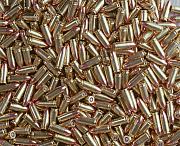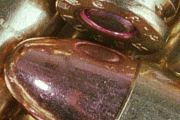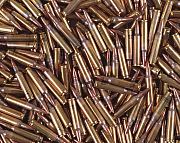
Click on the thumbnail picture to see a larger view

One morning I looked out to see some fungi that had invaded the lawn
overnight. They looked like they'd make a nice subject for a closeup
view, so a roll of film got loaded up. This was also an experiment in
the use of a reflector. With the sun on the left, the shadows on the
right side were rather harsh. A large piece of white paper filled in
the shadows for a nice overall look.

Here's a full-frame picture taken by the 6x7 cm Mamiya RZ67 camera with
the 140mm macro lens. Very nice, no retouching needed.

This is a section of the above negative scanned at 4000 dpi on a Howtek
model 4500 scanner. Click on the thumbnail to see the pixel-for-pixel
results. Yep, that's the film grain. Very sharp image!









Some outdoor pictures taken with the loaner camera. I bought this lens
and a different camera body and the other bits. Some of these shots are
taken at shutter speeds as slow as 1 second. Nature doesn't frequently
cooperate at these speeds -- the flower shot at the top left is blurred
because the wind was moving it back and forth. More to learn . . .
The chief characteristic of these pictures, as compared to scans from
35mm film, when displayed at relatively low resolution here on the web
is their total lack of film grain. This makes them appear almost blurry
when viewed. The original scans are done at 1000 dpi on a drum scanner.
The file size is typically about 17 MB for an image, with the resolution
typically at 2700 pixels on the long axis and 2200 on the short axis. A
couple of the pictures display a phenomenon called Newton's Rings, where
the negative is nearly touching the plastic scanning drum. This can be
eliminated by a few different techniques, but some involve mounting the
negative to the drum with a special gel or oil, and I'm not going to do
that for casual scans.












